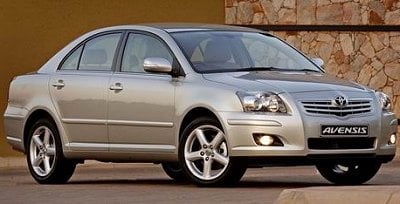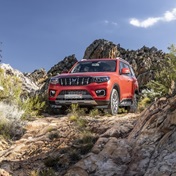
What is it about
Toyota builds a vehicle somewhere in the world every 4.2 seconds, every hour of every day - an annual global production figure of 7.5-million units. That makes it almost the world's largest automotive manufacturer. In fact, only just behind GM.
The Burnaston plant, one of the most efficient in Europe, produces up to 285 000 Avensis and Corolla models per year, with one car rolling off the production line every 45 seconds.
Burnaston is the source of the Avensis models coming to South Africa, and the Avensis is the company's flagship and replacement for the Camry.
However, just to set the semantics straight it is the replacement, but does not replace the Camry.
The semantics are important because Avensis is a European car and both smaller and way better looking than the Australian-built Camry.
Features
The front styling provides familial links to the Corolla and Yaris with strong crease lines running across the bonnet and down to frame the big, three-element headlight units, grille and the lower air intake in the bumper.
The Avensis 2.2 D-4D Exclusive is the flagship of the range and has a 2.2-litre common rail turbo-diesel four-cylinder engine mated to the six-speed manual transmission. Power output is 110 kW at 3 600 r/min and torque a very useful 310 Nm at 2 000 r/min.
To appreciate this Toyota requires driving it and living with it - which was also very much a trait of the Camry.
Firstly, it is still very roomy for rear seat passengers. Secondly, it will pleasantly surprise on matters of size, especially the large boot (520 litres) with its low loading height of 700 mm.
The latest Avensis is also ahead of most immediate rivals for cabin and luggage space.
Rear passengers are particularly well done by, and there are few cars with this length (4 645 mm) that offers as much rear-seat knee room, a benefit of modern design that allows maximum inside space within limited outer dimensions.
The design team obviously paid attention to details that really matter.
For example, the Avensis has clear and permanently lit instrumentation, and it does not suffer from the problem that affects some of its rivals, that there are exterior daytime light levels in which you cannot make out what half the dials are showing.
Across the range, as well as having eight conventionally placed air bags, the Avensis benefits from an additional air bag below the steering column to protect the driver's knees in the events of a major front-end impact.
Anti-lock braking, electronic brake force distribution, vehicle stability control, emergency brake assist and traction control are all standard, with luxury fittings including dual zone climate control, leather seat facings, power adjustable front seats, electrically operated windows and side mirrors and cruise control.
The clean, one-piece fascia moulding houses a tidy instrument binnacle containing Optitron instrumentation with a separate LED for each needle and number rather than conventional backlighting.
There is a lidded oddments tray in the middle of the fascia, storage for CDs in the centre armrest, pockets in the doors and at least four cup-holders. The rear seat back is split 60:40, with a fold-down centre armrest.
The Avensis comes standard with a 3 year/100 000 km warranty, a 5 year/ 90 000 km service plan and three years' of roadside assistance.
Driving it
When pressed on, the Avensis handles more precisely than initial appearance may indicate, the car benefiting from the adoption of the same double-wishbone rear suspension which gives such excellent balance to the sporty Celica. At the front is a McPherson strut layout with the castor angle optimised for straight-line stability and steering feedback.
And, talking of steering, this is speed-sensitive so it is extremely light at low speed and firms up as speed increases, offering good input to the driver as well as being accurate. The gear change has also been stiffened up so selection feels more precise and quicker through the cogs.
The turbo-diesel engine is a real beaut, and this results in quick-off-the mark acceleration - 9.6 seconds to 100 km/h, and a totally illegal top speed of 210 km/h, coupled with the driving ease that comes with having bags of low-down torque.
Toyota has chosen to fit a 6-speed manual gearbox in this one, which is something of a waste since most of the time you change 1-3-6 - the car is that tractable. On the plus side average fuel of 7.6 litres/100 km can't be scoffed at for a luxuriously appointed and spacious car like this one.
Likes:
Dislikes:
Verdict
While some people might not like the fairly conservative looks and the fact that it doesn't rev to 9 000 r/min, most of us aren't boy racers, and instead want a solid, reliable, comfortable and economical vehicle.
The Avensis scores all the way in that regard, and has the added bonus of being a Toyota, which means you know you'll get good service and a good resale value.




 Publications
Publications
 Partners
Partners











